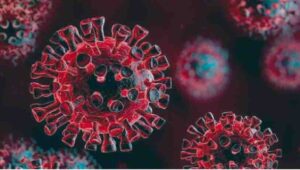Mostafa Kamal Majumder
The other day a man in his early sixties was awaiting the arrival of a doctor for exercise tolerance test of his heart at a famous diagnostic centre in Dhaka. The doctor, very busy doing his shift between doing echo cardiogram examinations and ETT, runs between two floors depending on the pressure of patients. Nurses at the ETT room had ‘prepared’ the man by attaching strings of the ETT machine all over the chest with pasted connectors. But the doctor took another 45 minutes to arrive by finishing his Echo Cardiogram at upstairs.The nurses present wanted to get the ETT done but the patienbt demanded presence of the doctor. Thus they had no alternative but to wait. The room was airconditioned as was the entire premise of the diagnostic centre. The environment was visibly neat and clean. The centre was well furnished. Patients do not have to awai on foot. The paramedics and other staff members wre well-dressed.
But inside the ETT room the man awaiting test with strings fitted to his chest complained of mosquito bites with the tiny insects clearly seen flying hither and thither to get a better opportunities to suck blood. One nurse was nice enough to stretch up to a cupboard and brought out a can of aerosol to spray. But the patient protested as he had asthma problems. The mosquitoes in the room thus got extended lberty to bite the people present and who knows also spread germs and viruses of malaria or dangue fever!
If this was the state of a small room in the big multi-storied diagnostic centre what was the condition of the large arrival room and the waiting roms where hundreds of patients sufferent from various diseases, as thier attendents, frequent. The doors of the arrival and waiting lounges remain open during working hours and thus without doubt give the mosquitoes lovely freeding grounds.
As mentioned before the said diagnosytic centre supplies aerosols to kill mosquitoes in the small rooms assigned for different kinds of medical examinations. But mosquoties can n no way get to those rooms quite inside the centres if the arrival and waiting rooms are not filled with the tiny insects. In those rooms the share of mosquito bite to an individual person is limited because of the presence of a large number of them by rotation.
The biggest danger, however, is people going to such famus centres to diagnose old diseases might actually return contracting new diseaes. The centre staff, doctors and paramedics are also no exceptions. In fact they are under more threats of infection because each one of them has to deal with dozens of patients of diferent kinds. They have not only to talk to patients, touch them, take their blood and body fluid samples and examine those. Any casual approach or lack of cleanliness might invite the most deadly infection unawares.
The mosquitoes of different breeds now spread not only malaria and deague but also Zica. And the unprotected diagnostic centres are their luxurious hosts. These centres are also the most suited to spread the diseaes because patients need not be sampled and brought there for surveys, they come one their own and unknowingly pass germs or viruses through mosquitoes to other patients or visitors innocently. The operators of diagnostic centres are not supposed to be unaware of the threat, and deserve to be taken to tasks. – 21 Aug 2016




